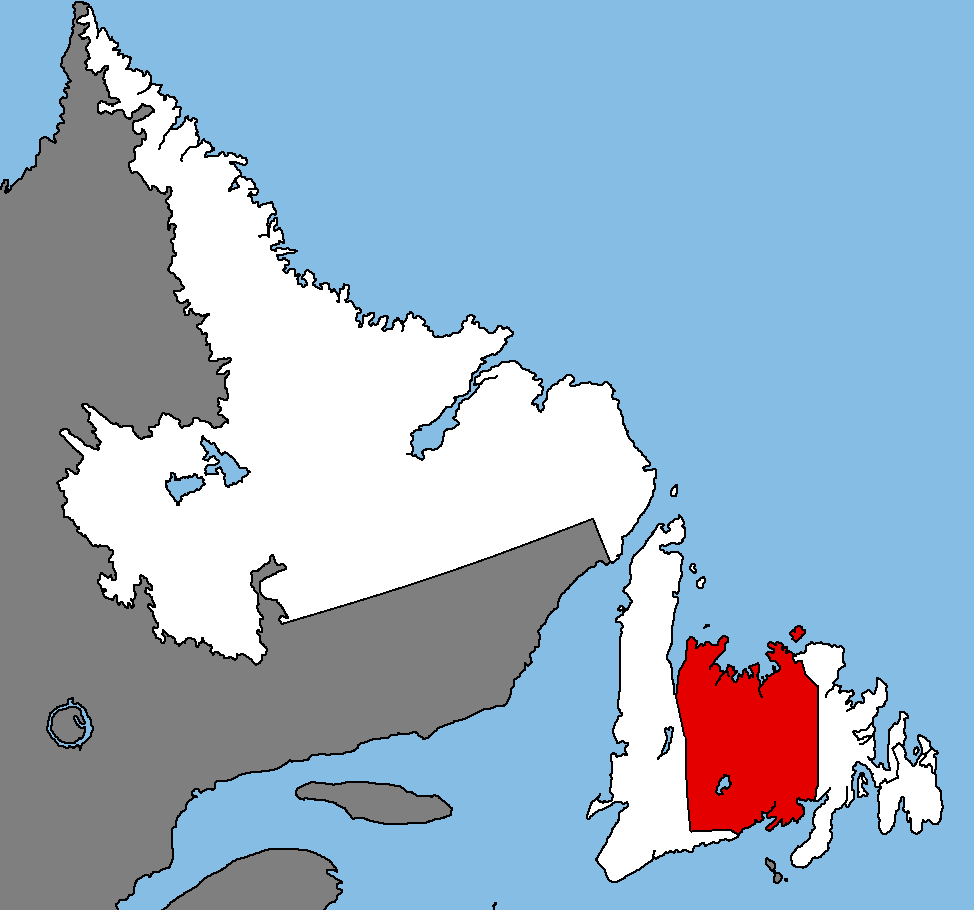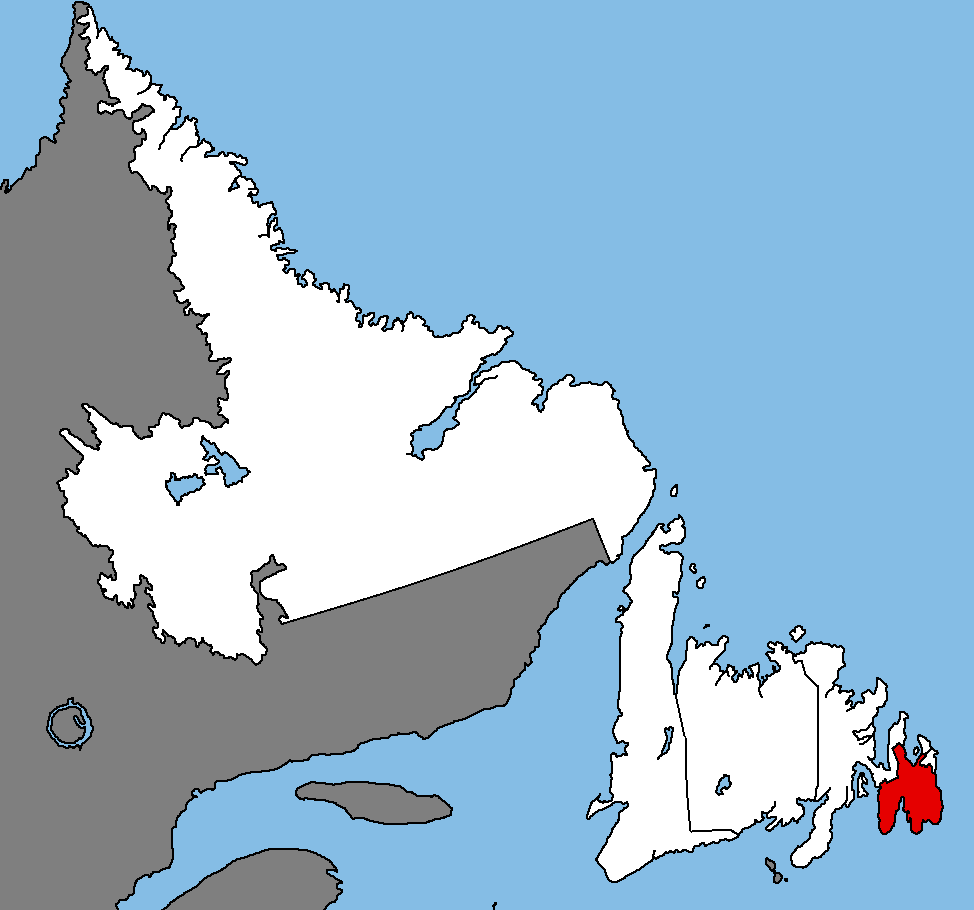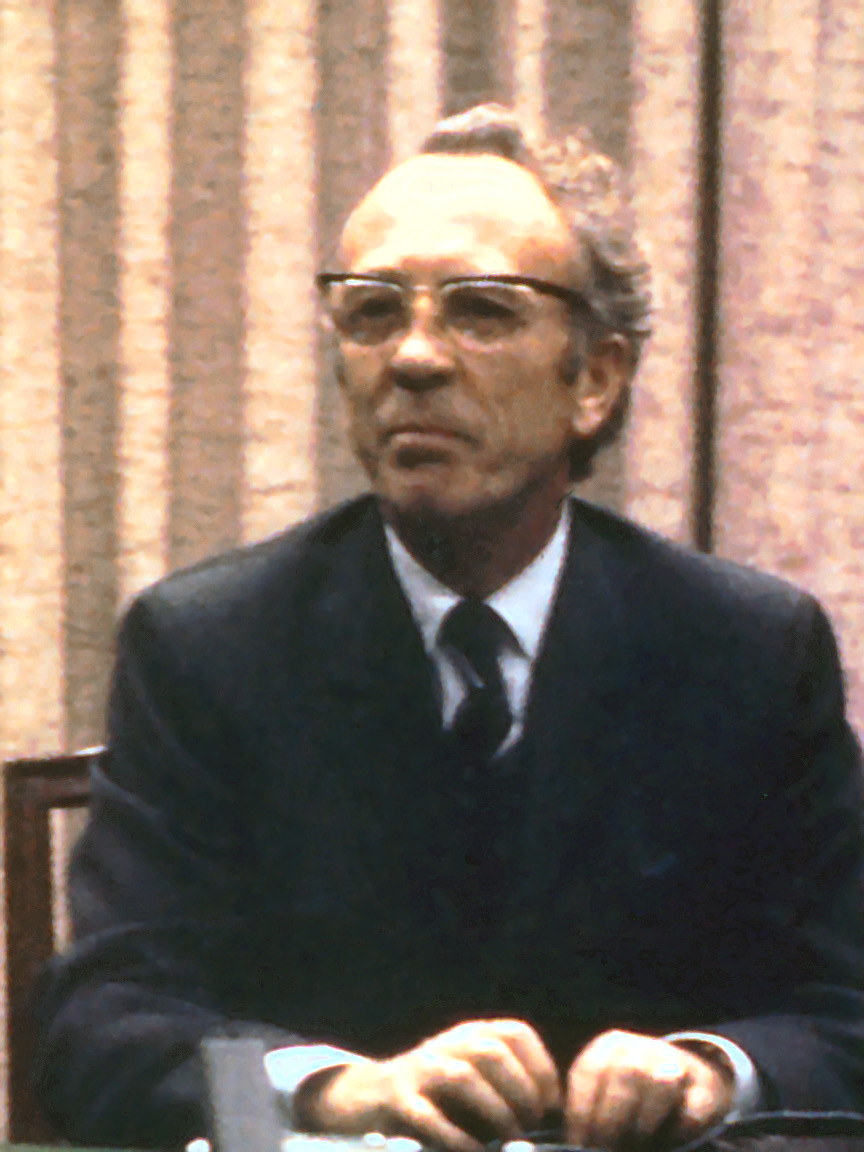|
2021 Canadian Federal Election In Newfoundland And Labrador
The 2021 Canadian federal election in Newfoundland and Labrador was held on September 20, 2021 in the 7 electoral districts in the province of Newfoundland and Labrador. The Liberal Party, led by Justin Trudeau, won 6 of the province's 7 seats, repeating their performance in the previous federal election. Though they gained a seat in St. John's East from the New Democrats, they lost a seat to the Conservative Party in Coast of Bays—Central—Notre Dame. This was the first election since 2011 where a Conservative candidate won a seat in Newfoundland and Labrador. Summary of results Synopsis by riding See also * Canadian federal election results in Newfoundland and Labrador References 2021 Newfoundland and Labrador Newfoundland and Labrador is the easternmost province of Canada, in the country's Atlantic region. The province comprises the island of Newfoundland and the continental region of Labrador, having a total size of . As of 2025 th ... [...More Info...] [...Related Items...] OR: [Wikipedia] [Google] [Baidu] |
List Of Canadian Federal Electoral Districts
This is a list of Canada's 343 federal electoral districts (commonly referred to as '' ridings'' in Canadian English) as defined by the ''2023 Representation Order''. Canadian federal electoral districts are constituencies that elect members of Parliament to the House of Commons of Canada every election. Provincial electoral districts often have names similar to their local federal counterpart but usually have different geographic boundaries. Canadians elected members for each federal electoral district most recently in the 2025 federal election on April 28, 2025. There are four districts established by the ''British North America Act 1867'' that have existed continuously without changes to their names or being abolished and reconstituted as a riding due to redistricting: Beauce (Quebec), Halifax (Nova Scotia), Shefford (Quebec), and Simcoe North (Ontario). These districts, however, have undergone territorial changes since their inception. Alberta – 37 seats * Ai ... [...More Info...] [...Related Items...] OR: [Wikipedia] [Google] [Baidu] |
Coast Of Bays—Central—Notre Dame
Central Newfoundland (formerly Coast of Bays—Central—Notre Dame) is a federal electoral district in Newfoundland and Labrador, Canada. It was created from the portions of the island of Newfoundland previously included in the electoral districts of Bonavista—Gander—Grand Falls—Windsor (72%), Humber—St. Barbe—Baie Verte (18%) and Random—Burin—St. George's (10%). Coast of Bays—Central—Notre Dame was created by the 2012 federal electoral boundaries redistribution and was legally defined in the 2013 representation order. It came into effect upon the call of the 2015 Canadian federal election, held October 19, 2015. Following the 2022 Canadian federal electoral redistribution, this riding was renamed Central Newfoundland. Demographics ''According to the 2021 Canadian census'' Ethnic groups: 91.8% White, 7% Indigenous Languages: 98.9% English Religions: 86.3% Christian (19% Catholic, 17.5% Pentecostal and other Charismatic, 17% Anglican, 14.6% Methodist a ... [...More Info...] [...Related Items...] OR: [Wikipedia] [Google] [Baidu] |
Canadian Federal Elections In Newfoundland And Labrador
Canadians () are people identified with the country of Canada. This connection may be residential, legal, historical or cultural. For most Canadians, many (or all) of these connections exist and are collectively the source of their being ''Canadian''. Canada is a multilingual and multicultural society home to people of groups of many different ethnic, religious, and national origins, with the majority of the population made up of Old World immigrants and their descendants. Following the initial period of French and then the much larger British colonization, different waves (or peaks) of immigration and settlement of non-indigenous peoples took place over the course of nearly two centuries and continue today. Elements of Indigenous, French, British, and more recent immigrant customs, languages, and religions have combined to form the culture of Canada, and thus a Canadian identity and Canadian values. Canada has also been strongly influenced by its linguistic, geographic, an ... [...More Info...] [...Related Items...] OR: [Wikipedia] [Google] [Baidu] |
Canadian Federal Election Results In Newfoundland And Labrador
Canadian federal elections have provided the following results in Newfoundland and Labrador. Regional profile Newfoundland and Labrador has been a Liberal heartland since it joined Canada in 1949, with only the city of St. John's electing Progressive Conservatives on a relatively consistent basis in the past, though that support shifted to the NDP and Liberal parties in 2006 and to the NDP in the 2008 elections. Even in the 1984 Mulroney landslide, more rural and remote seats went Liberal than PC. The Conservatives picked up one seat in the 2006 election, but the Liberals still held a majority of the seats. Party preference here has a lot to do with religion, where Catholics tend to vote Conservative and Protestants Liberal (contrary to the rest of the country). In 2008, the Anything But Conservative movement took hold here and the Conservatives lost all their seats to the Liberals and NDP. In the 2011 election, Newfoundland and Labrador was the only province to have the L ... [...More Info...] [...Related Items...] OR: [Wikipedia] [Google] [Baidu] |
Cape Spear (electoral District)
Cape Spear (formerly St. John's South—Mount Pearl) is a federal electoral district in Newfoundland and Labrador, Canada, that has been represented in the House of Commons of Canada since 2004. Demographics Ethnic groups: 99.2% White Languages: 98.7% English Religions: 52.8% Catholic, 42.4% Protestant, 3.6% no affiliation Average income: $25 379 Geography The district includes the south end of the City of St. John's, the City of Mount Pearl,the Town of Paradise and the Town of Petty Harbour-Maddox Cove. The neighbouring ridings are Avalon and St. John's East. According to Elections Canada, the geographic boundaries of this riding for the 39th General Election are: :"All that area consisting of: :: (a) that part of the City of St. John's lying southeasterly of the southeasterly limits of the towns of Conception Bay South and Paradise, and southeasterly of a line described as follows: commencing at the intersection of the westerly limit of the City of St. John's with ... [...More Info...] [...Related Items...] OR: [Wikipedia] [Google] [Baidu] |
Long Range Mountains (electoral District)
Long Range Mountains is a federal electoral district (Canada), electoral district in the Canadian province of Newfoundland and Labrador. It covers the entirety of the west coast of the island of Newfoundland (island), Newfoundland. Long Range Mountains was created by the Canadian federal electoral redistribution, 2012, 2012 federal electoral boundaries redistribution and was legally defined in the 2013 representation order. It came into effect upon the call of the 42nd Canadian federal election, which took place in October 2015. It was created out of the electoral districts of Humber—St. Barbe—Baie Verte (65%) and Random—Burin—St. George's (35%). Geography The riding covers the west coast of the island of Newfoundland, from Channel-Port aux Basques and Burgeo in the south, to St. Anthony, Newfoundland and Labrador, St. Anthony and L'Anse aux Meadows in the north. The largest community in the riding is the city of Corner Brook. It also includes Gros Morne National Par ... [...More Info...] [...Related Items...] OR: [Wikipedia] [Google] [Baidu] |
Labrador (electoral District)
Labrador (formerly known as Grand Falls—White Bay—Labrador and Grand Falls—White Bay) is a federal electoral district (Canada), electoral district in Newfoundland and Labrador, Canada, that has been represented in the House of Commons of Canada since 1949. The Riding (division)#Canada, riding covers all of Labrador and, with just 26,000 people located in the riding, it is the least populous in Canada. From 2005 to 2011, the riding was represented by Liberal Party of Canada, Liberal MP Todd Russell. He was defeated by Conservative Party of Canada, Conservative Peter Penashue in the 2011 federal election. Following allegations of irregularities in his campaign spending, Penashue announced on March 14, 2013 that he would resign his seat and run again as a candidate in a new by-election. Penashue subsequently lost the by-election to Liberal candidate Yvonne Jones. Jones was re-elected in the 2015, 2019, and 2021 federal elections. The riding is viewed as a Liberal stronghol ... [...More Info...] [...Related Items...] OR: [Wikipedia] [Google] [Baidu] |
Central Newfoundland
Central Newfoundland (formerly Coast of Bays—Central—Notre Dame) is a federal electoral district in Newfoundland and Labrador, Canada. It was created from the portions of the island of Newfoundland previously included in the electoral districts of Bonavista—Gander—Grand Falls—Windsor (72%), Humber—St. Barbe—Baie Verte (18%) and Random—Burin—St. George's (10%). Coast of Bays—Central—Notre Dame was created by the 2012 federal electoral boundaries redistribution and was legally defined in the 2013 representation order. It came into effect upon the call of the 2015 Canadian federal election, held October 19, 2015. Following the 2022 Canadian federal electoral redistribution, this riding was renamed Central Newfoundland. Demographics ''According to the 2021 Canadian census'' Ethnic groups: 91.8% White, 7% Indigenous Languages: 98.9% English Religions: 86.3% Christian (19% Catholic, 17.5% Pentecostal and other Charismatic, 17% Anglican, 14.6% Methodist an ... [...More Info...] [...Related Items...] OR: [Wikipedia] [Google] [Baidu] |
Terra Nova—The Peninsulas
Terra Nova—The Peninsulas (formerly Bonavista—Burin—Trinity) is a federal electoral district on Newfoundland Island in Newfoundland and Labrador, Canada, that has been represented in the House of Commons of Canada since 2015. Bonavista—Burin—Trinity was created by the 2012 federal electoral boundaries redistribution and has been legally defined in the 2013 representation order. It came into effect upon the call of the 2015 Canadian federal election, held October 19, 2015. It was created out of parts of the electoral districts of Random—Burin—St. George's (41%), Bonavista—Gander—Grand Falls—Windsor (37%) and Avalon (22%). Following the 2022 Canadian federal electoral redistribution, this riding was renamed Terra Nova—The Peninsulas, and gained the east coast of Placentia Bay from Avalon, while losing Salmon Cove to Avalon. Demographics According to the 2011 National Household Survey, Bonavista—Burin—Trinity is the most Christian riding in Canada wi ... [...More Info...] [...Related Items...] OR: [Wikipedia] [Google] [Baidu] |
Avalon (electoral District)
Avalon is a federal electoral district (Canada), electoral district on Newfoundland Island in Newfoundland and Labrador, Canada. It has been represented in the House of Commons of Canada since 2004. Demographics :''According to the 2021 Canadian census; 2023 representation'' Racial groups: 96.3% White, 2.7% Indigenous Languages: 99.2% English Religions: 86.2% Christian (38.9% Catholic, 25.8% Anglican, 11.8% United Church, 3.0% Methodist, 2.7% Pentecostal, 3.9% Other), 13.5% No religion Median income (2020): $38.800 Average income (2020): $49,560 Geography The neighbouring ridings are Terra Nova—The Peninsulas to the west and north, and Cape Spear (electoral district) and St. John's East (federal electoral district), St. John's East to the east. As of the Canadian federal electoral redistribution, 2012, 2013 representation order, the riding of Avalon consists of: *All that area consisting of that part of the Avalon Peninsula on the Newfoundland (island), Island of Newfoundl ... [...More Info...] [...Related Items...] OR: [Wikipedia] [Google] [Baidu] |
People's Party Of Canada
The People's Party of Canada (PPC; ) is a federal political party in Canada. The party was formed by Maxime Bernier in September 2018, shortly after his resignation from the Conservative Party of Canada. It is placed from the right to the far-right on the political spectrum. Bernier, a former candidate for the 2017 Conservative Party of Canada leadership election and cabinet minister, was the party's only Member of Parliament (MP) from its founding in 2018 to his defeat in the 2019 Canadian federal election. In that election, the PPC formed electoral district associations in 326 ridings, and ran candidates in 315 ridings, of Canada's total 338 ridings; however, no candidate was elected under its banner and Bernier lost his bid for personal re-election in Beauce. The party ran 312 candidates in the 2021 Canadian federal election; the party increased its share of the popular vote to nearly 5%, but again elected no MPs. In the 2025 Canadian federal election, it achieved its ... [...More Info...] [...Related Items...] OR: [Wikipedia] [Google] [Baidu] |
New Democratic Party Of Canada
The New Democratic Party (NDP; , ) is a federal political party in Canada. Widely described as social democratic,The party is widely described as social democratic: * * * * * * * * * * * * * The Editors of ''Encyclopædia Britannica'' (April 28, 2025)."New Democratic Party" ''Encyclopædia Britannica''. Retrieved April 28, 2025 the party sits at the centre-left to left-wing of the Canadian political spectrum, generally to the left of the Liberal Party. The party was founded in 1961 by the Co-operative Commonwealth Federation and the Canadian Labour Congress. As of 2025, it is the fourth-largest party in the House of Commons, with seven seats. The federal and provincial (or territorial) level NDPs are more integrated than other political parties in Canada, and have shared membership. The NDP has never won the largest share of seats at the federal level and thus has never formed government. From 2011 to 2015, it formed the Official Opposition; apart from this, it ... [...More Info...] [...Related Items...] OR: [Wikipedia] [Google] [Baidu] |








